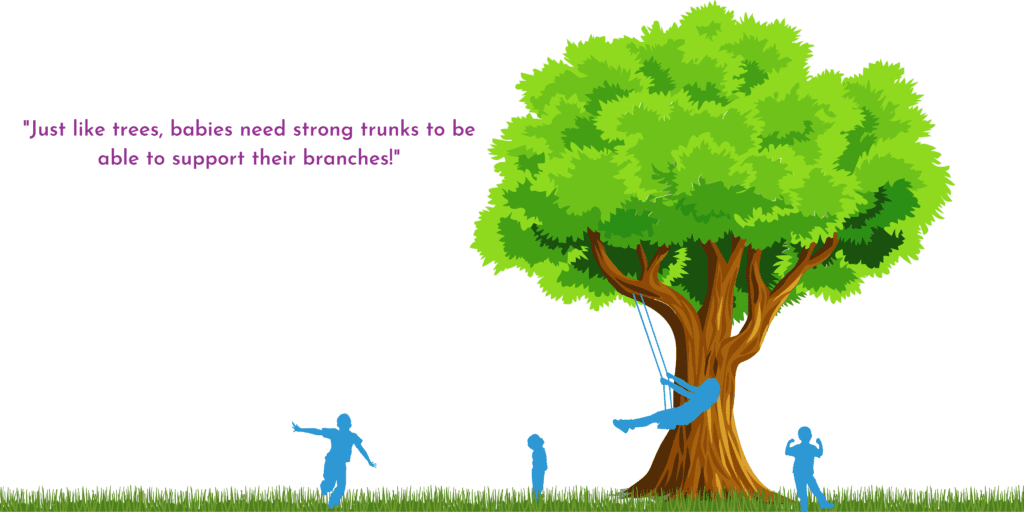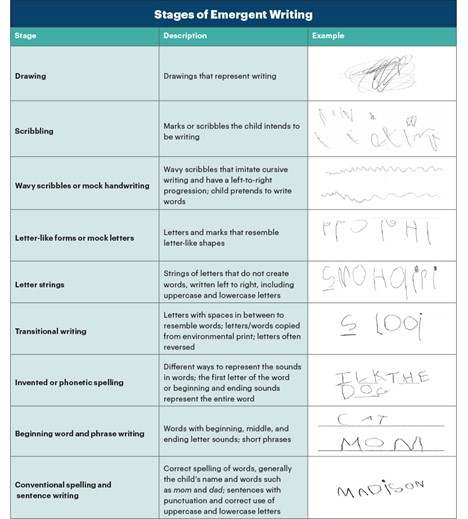Have you ever made the connection between playground fun and learning how to write? When we think about how babies develop control of their bodies, it begins with holding up their little heads first. We are all so excited when this happens! As we watch our babies grow and we give them the freedom of movement, developing muscle control moves from the head down through the center of the body and then out. Just like trees, babies need strong trunks to be able to support their branches!

It is easy to see babies develop strong trunk muscles as we watch them reach milestones such as crawling, sitting up on their own and eventually walking! It is a little harder to see the continuous need to develop strong trunk muscles in our preschoolers because they are typically moving about on their own, but we still need to give them plenty of time to keep working on their core so when the time is right, they will do their best with holding a pencil to write.
Moral of the story, lots of opportunities for “BIG” movement throughout daily routines leads to children being more successful at “FINE MOTOR” skills. This is one of the many reasons why Play & Learn is so committed to playing outdoors on a daily basis as part of our educational program.
Thinking again about how muscle control develops first from head to toe, and then from center of the body to outer extremities, we can understand the stages of emergent writing. Before babies even get to draw or scribble in a way that “means or represents” a thought, they simply need experiences that make them strong and respect the way they develop. Our youngest ones might be able to “physically” hold a crayon and make marks on a page when sitting in a supported chair, but at first, that is exactly what it is – just a physical exercise. As they learn that symbols mean something, typically around the age of 2, that is when the Stages of Emergent Writing actually begin!
The chart below is from the National Association of the Education of Young Children and it outlines the typical stages children go through as they learn to write. Each stage needs time, and as the adults, when we understand that, our encouragement and the activities we provide for our children can be more strategic. For instance, during the “drawing” stage, as children are just beginning to make the connection between symbols and meaning, we should not try to “guess” at the meaning. The best way to support learning during this phase is for the adult to simply say, “Tell me about your drawing!” Using this strategy allows the child to communicate what they “meant” and connect their thoughts to their drawing. After all, who could have known that those circular scribbles were about the tricycle ride they had on the playground without asking the child. Guessing something like “Oh, is that a puddle?” when it is really the memory of a tricycle ride, can impact the child’s continued attempts at communicating through writing. So, just ask! As you read over the chart below, think about what is happening at each stage and the kind of conversation you can have with children to support each stage. As they begin to “mock handwriting,” comment on how you can see they start on the left and go to the right, or comment on how the lines are wavy, and again, ask what they are trying to communicate without your own assumptions.

First and foremost, though, what children need is lots of opportunities to practice! Be sure that whether in the classroom or at home, children have access to crayons, chalk, markers and paper, chalkboards, or white erase boards! And most importantly, remember the connection between lots of gross motor time in early childhood and the posture used when sitting in a desk and writing an essay in 8th grade!
If you are interested in learning more about developmental milestones, please visit CDC’s Developmental Milestones | CDC. You can even download a free tracker for your own child from this link.







